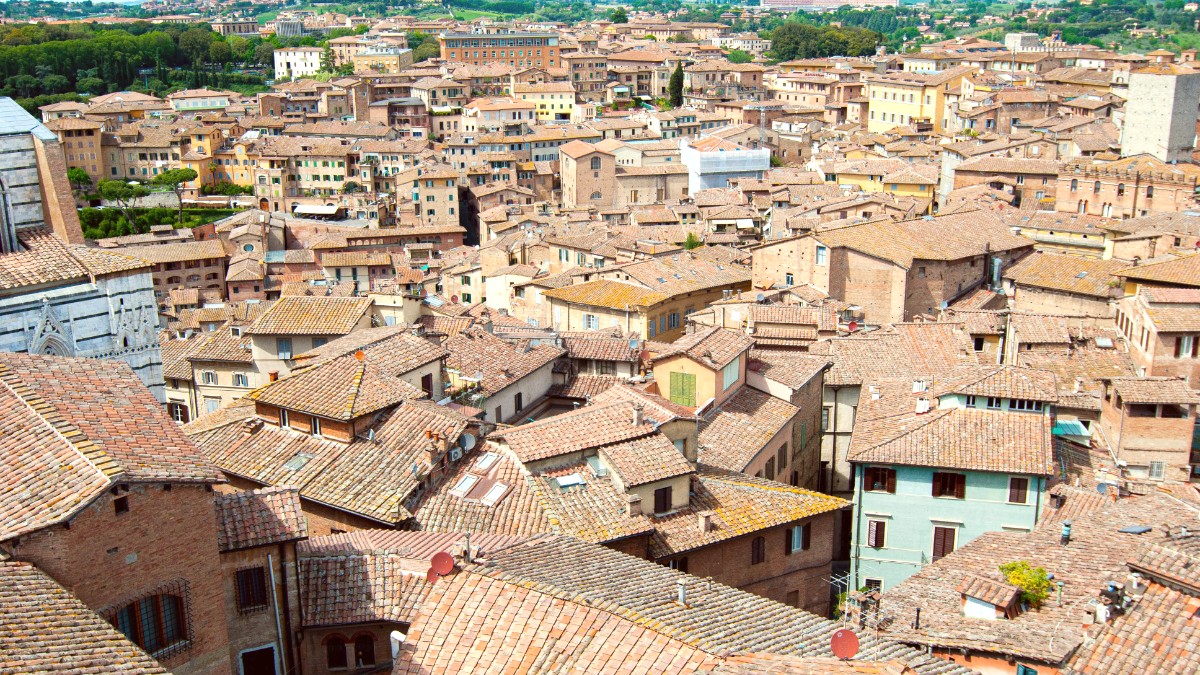
Tuscany, Italy
Sienese cuisine is deeply rooted in Tuscany's agricultural heritage. It champions simple preparations that allow natural flavors of high-quality ingredients to shine.
Tuscan bread (pane toscano) is notably unsalted, balancing cured meats, cheeses, and rich sauces. This tradition dates back to the 12th century Pisan blockade of salt.
Regional specialty, often a rich ragù for pasta or a hearty stew. Chianina beef for Bistecca alla Fiorentina.
Sharp, salty sheep's milk cheese, especially from Pienza. Tuscan extra virgin olive oil for cooking and finishing.
Black truffles (autumn), saffron, cannellini beans. Pici: thick, hand-rolled pasta, unique to Siena.
Thick, hand-rolled pasta, Siena's culinary emblem. Try Pici Cacio e Pepe, Pici all'Aglione, or Pici al Ragù di Cinghiale.
A local specialty.
Ribollita: robust bread and vegetable soup. Pappa al Pomodoro: tomato, garlic, basil, olive oil, thickened with stale bread.
Hearty Tuscan soups.
Cinghiale (wild boar) in ragù or stew. Bistecca: thick-cut, rare T-bone steak from Chianina beef, widely available.
Meat lover's delight.
Osterias and trattorias offer more rustic, traditional, and affordable fare. Ristorantes tend to be more formal and expensive.
Tipping is not mandatory but appreciated for good service. Refer to section 2.3 for detailed customs.
For special occasions, refined Tuscan cuisine with extensive wine lists and elegant ambiance.
Abundant trattorias and osterias offer traditional Sienese and Tuscan dishes in casual, welcoming settings.
Pizzerias, bars (for paninis, pastries, coffee), and small delis offer quick, affordable meals.
Opportunity to purchase fresh produce, meats, cheeses, and some prepared foods. Good for picnic supplies.
Local life observation.
Widely available.
Limited alternative options.
Awareness of "senza glutine" (gluten-free) is growing. Many pizzerias offer gluten-free crusts.
Inform staff of severe allergies: "Sono allergico/an a..."
Use apps like HappyCow for vegan/vegetarian-friendly restaurants. Search online for "ristoranti senza glutine Siena".
Always confirm with restaurant staff upon arrival.
Carry a small card with your dietary needs translated into Italian, especially for complex allergies.
For strict dietary needs, consider vacation rentals with kitchens. Local markets offer fresh ingredients.
Hands-on classes focus on Tuscan and Sienese cuisine. Learn to make pici pasta, tiramisu, or traditional dishes.
Agriturismi offer tours of vineyards, olive groves, and cheese production facilities.
Guided tours to vineyards in Chianti Classico, Montalcino, or Montepulciano. Visits to cellars and guided tastings.
Observing pre-race parades and Piazza atmosphere is also a powerful experience.
Look for local workshops that offer insights into traditional Sienese crafts (ceramics, leather goods, jewelry).
Support local artisans.
Always book fine dining restaurants in advance, especially for special occasions.
For popular mid-range trattorias, especially on weekends, making a reservation is a good idea.
During food festivals or the Palio, booking well in advance becomes critical.
Engage with local restaurant staff for recommendations; they often offer insights into daily specials.